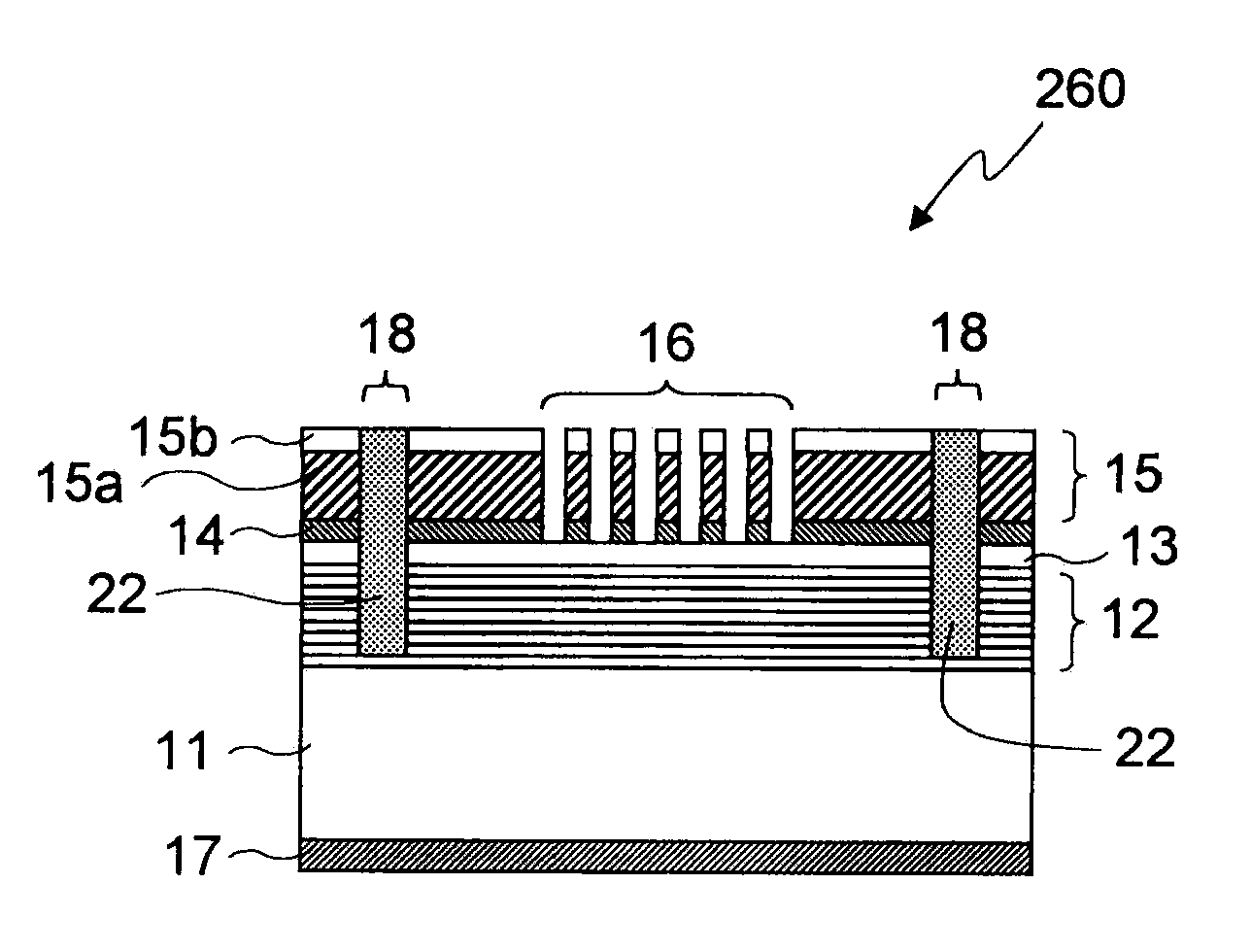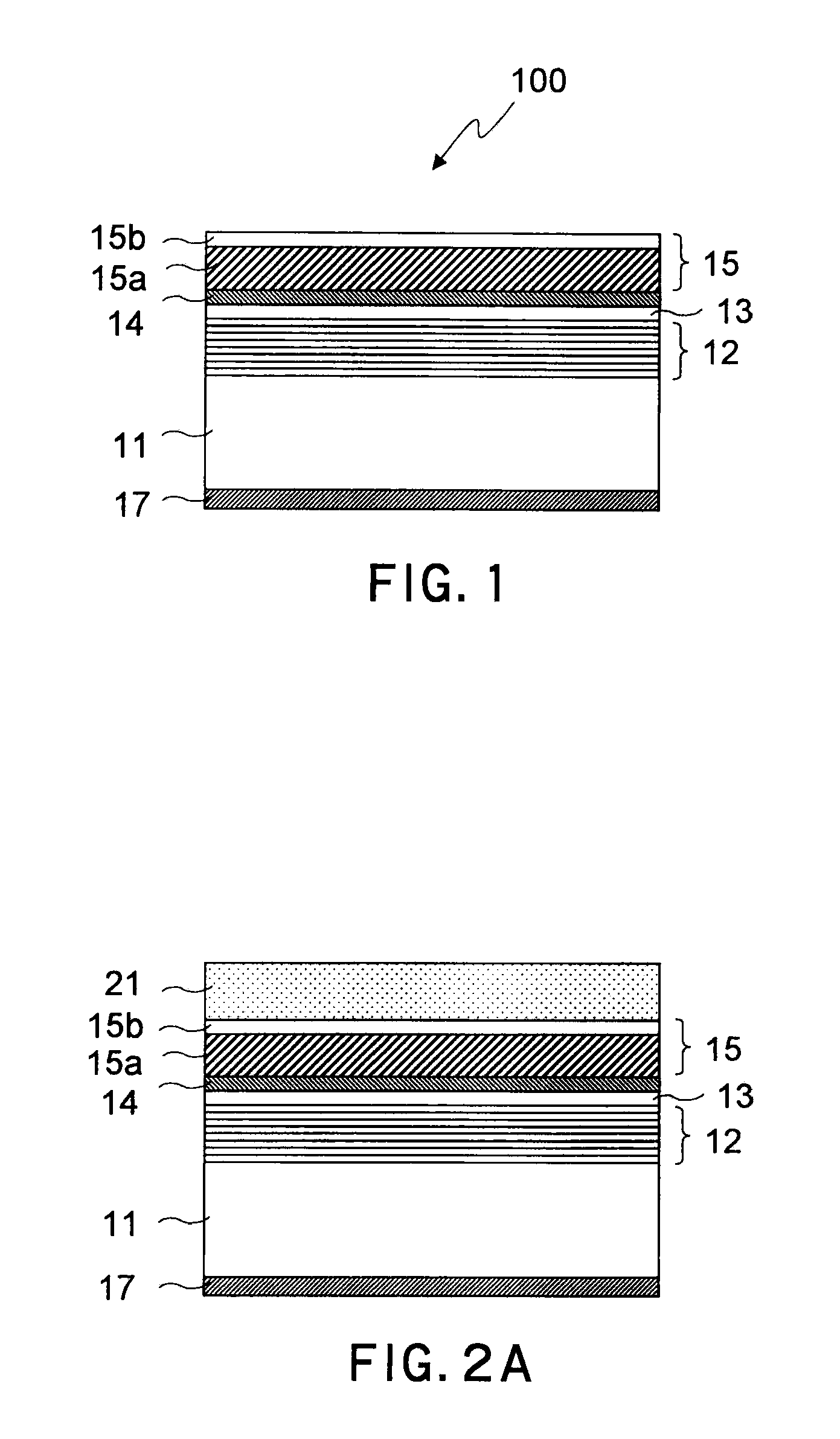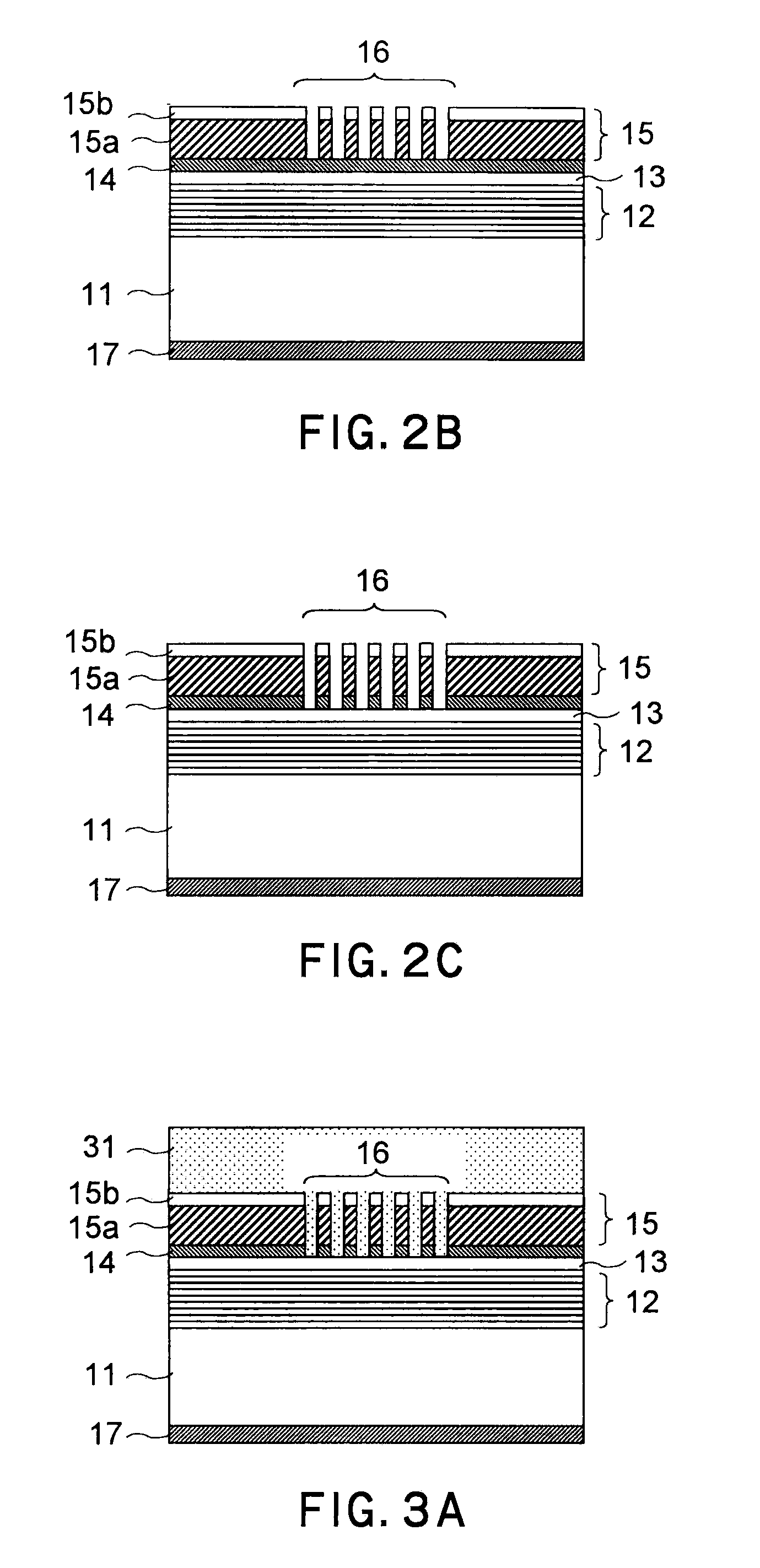Reflection-type mask and method of making the reflection-type mask
a mask and reflection technology, applied in the field of reflection masks, can solve the problems of increased shadowing effect, increased shadowing effect, increased intensity of light radiated from the photoabsorber layer to the outside of the mask,
- Summary
- Abstract
- Description
- Claims
- Application Information
AI Technical Summary
Problems solved by technology
Method used
Image
Examples
first embodiment
[0043]A method of making a mask blank used in making of a reflection-type mask according to the first embodiment of the present invention and components will be described. FIG. 1 is a sectional view of a mask blank 100.
[0044]As can be understood from FIG. 1, the mask blank 100 is made by successively forming a multilayer reflective film 12, a capping layer 13, a buffer layer 14 and a photoabsorber layer 15 on a glass substrate 11 and thereafter forming a back conductive film 17 on a back surface of the glass substrate 11. Each constituent member will be described below.
[0045]The glass substrate 11 is a glass substrate having an extremely low thermal expansion coefficient (a low thermal expansion material (LTEM)).
[0046]The multilayer reflective film 12 is a stack of a pair of thin films formed of molybdenum (Mo) thin film and silicon (Si) thin film in 40 to 50 pairs. This pair of films is formed by sputtering. The multilayer reflective film 12 reflects EUV light, which is exposure li...
second embodiment
[0064]The second embodiment of the present invention will be described. In the second embodiment, a mask blank 110 shown in FIG. 4 is used. This mask blank 110 differs from the mask blank 100 described above in the description of the first embodiment in that an electroconductive layer 19 is formed between the glass substrate 11 and the multilayer reflective film 12. The electroconductive layer 19 is a metal film having tantalum (Ta) or chromium (Cr).
[0065]A method of making a reflection-type mask 210 according to the present embodiment will be described.
(1) The process described above in the description of the first embodiment is performed on the mask blank 110 to obtain a reflection-type mask at an intermediate making stage shown in FIG. 5A.
(2) Next, a plasma etching process for etching on the photoabsorber layer 15, the buffer layer 14, the capping layer 13 and the multilayer reflective film 12 is performed, as described above with respect to the first embodiment. However, as can ...
third embodiment
[0071]The third embodiment of the present invention will be described. In the third embodiment, a mask blank 120 shown in FIG. 6 is used. This mask blank 120 differs from the mask blank 100 described above in the description of the first embodiment in that, as can be understood from FIG. 6, a second photoabsorber layer 15-2 is formed on a first photoabsorber layer 15-1 corresponding to the photoabsorber layer 15 described above in the description of the first embodiment.
[0072]Each of the first photoabsorber layer 15-1 and the second photoabsorber layer 15-2 has an absorber 15a and an antireflection film 15b formed on the absorber 15a. A material containing tantalum (e.g., TaN, TaBN or TaBO) is used as the material of the photoabsorber layer.
[0073]The material and the film thickness of the first photoabsorber layer 15-1 are determined to enable attenuated phase shift exposure, as in the case of the photoabsorber layer 15 described in the description of the first embodiment.
[0074]A pr...
PUM
| Property | Measurement | Unit |
|---|---|---|
| wavelength | aaaaa | aaaaa |
| angle | aaaaa | aaaaa |
| wavelength | aaaaa | aaaaa |
Abstract
Description
Claims
Application Information
 Login to View More
Login to View More - R&D
- Intellectual Property
- Life Sciences
- Materials
- Tech Scout
- Unparalleled Data Quality
- Higher Quality Content
- 60% Fewer Hallucinations
Browse by: Latest US Patents, China's latest patents, Technical Efficacy Thesaurus, Application Domain, Technology Topic, Popular Technical Reports.
© 2025 PatSnap. All rights reserved.Legal|Privacy policy|Modern Slavery Act Transparency Statement|Sitemap|About US| Contact US: help@patsnap.com



